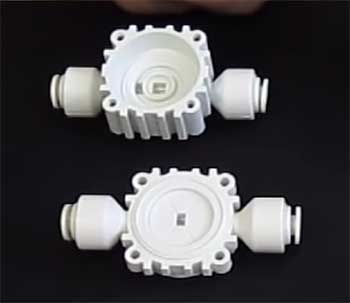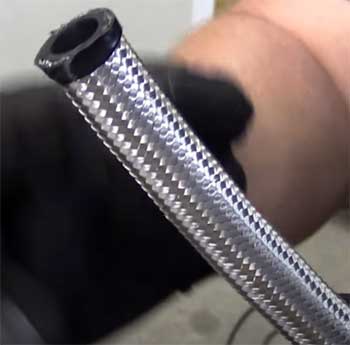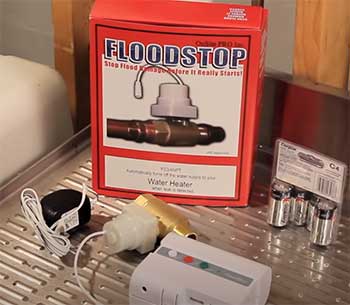Sometimes, your water heater may leak water from the base area due to damages or a faulty water piping system. That’s why we use a rectangular-shaped drain pan to catch dripping water.
This allows you to deal with unwanted scenarios.
But if your drain pan is damaged or you cannot buy it, what should you place beneath the water heater? So, what is the best water heater drain pan alternative?
Check this post to learn about it.
Water Heater Drain Pan Substitutes
It is good to have a water heater drain pan to collect the unwanted water from the machine base area. But several situations may prevent you from using it.
Looking for an alternative option? Thankfully, you can use some alternative options instead of a drain pan. Here are a few of them:
- Utilizing Automated Shut Off Valves

If your water heater is the latest version, it features automated shut-off Valves. Several series of valves are connected to a water heater from the water supply line.
When the water heater has any leaking issues, it will cause flooding issues.
Any typical valve won’t be able to handle this situation. But an automatic shut-off valve can efficiently prevent the water from flooding below the base.
Generally, it has a special sensor at the base area.
When there is any flooding issue, the activated sensor will instantly prevent supplying any additional water. This will prevent serious damage to the machine.
You can also buy this type of automated shut-off valve for your water heater. They will cost around $150. You can install them on your own with the necessary tools.
But you may struggle a little if you are doing it for the first time. Take professional help.
- Using Braided Hoses

Braided Hoses are another effective choice since they have a smooth flow and better heat dissipation.
Generally, cheap quality hoses or pipes cause leaking issues within a short time.
Though rubber or plastic can perform decently, their durability is not up to the market.
The reason is that they develop micro-cracks issues since their internal lining smooth rubber coating. This results in leaking issues.
You may think your rubber pipe or hose is okay though its internal lining is already damaged. Braided hoses are prone to have leaking issues easily.
They have a sturdy construction and are effective in dealing with higher pressure. Hence, you are less likely to experience flooding and leaking issues.
- Automatic Turn Off Water Heater

Another effective approach is installing a sensor that will turn off the water heater.
Generally, you will install it from the base area.
The sensor will automatically be able to detect if it notices any unwanted wetness. Then, it will turn off the whole system of the water heater.
Using this advanced sensor gives you multiple benefits. For instance, you can control your water heater’s temperature level and water flow rate using an app.
However, not all water heaters are compatible with this type of sensor. Contacting the manufacturer company is a good rule of thumb before selecting a particular one.
They will make you knowledgeable to ensure its compatibility or incompatibility. Plus, you should take their permission if your water heater still has the warranty period.
- DIY Drain Pan
If you don’t have the accessibility to buy any drain pan and other alternative options, you can create a DIY drain pan for your water heater for a temporary purpose.
- At first, choose an empty water bottle, which has a relatively larger opening and 5 quarts size. Its middle area should be extra wide too.
- Get a Utility Knife and start cutting the bottle. Be careful while cutting it. It may slip out and bite you.
- Cut the bottle slightly upward and downward sawing motion. You want to cut it parallel to the reinforced molding.
- Alternatively, you can utilize a decent pair of scissors if you fear cutting your hands.
- Keep cutting the bottle until you take out one side of the middle portion. Avoid cutting the area of the bottle. Otherwise, water will leak through it.
- Now, connect the water heater hose to the bottle opening. The leaking or dripping water will come through it and store inside the bottle.
Since it is a temporary solution, you should get a good-quality water drain pan as early as possible.
Other Alternatives You Can Try
Elevate on Concrete Blocks
One option is to raise your water heater up on concrete blocks or bricks to essentially create space for water to drain safely below. Place the tank high enough so you can position buckets or pans underneath to collect drips.
Pros:
- Allows leak drainage without major renovation
- Gets tank up off the floor
- Fairly inexpensive using standard concrete blocks
Cons:
- Still risk of overflow if not monitored
- Can look messy and cluttered
- Raises tank, which could restrict access
Build Containment Platform
For a more finished look, you can build an organized containment platform by framing a sturdy base with 2x4s and topping it with plywood sealed to be waterproof. Add side panels to hold leaks.
Pros:
- Creates structured containment system
- Prevent spills from spreading
- Looks tidy when finished
Cons:
- More complex DIY project
- Still needs regular draining
- Time and cost to build
Install Auxiliary Drain Pan
Another option is to install an auxiliary drain pan designed for retrofitting under existing water heaters without subfloor drains. These systems tie into condensation lines.
Pros:
- Don’t need access to floor drain
- Works with any heater location
- Many products available
Cons:
- Condensation line may not handle large leaks
- Need to correctly slope pan
- More expensive than basic options
Route to Floor Drain
If you have access to a floor drain elsewhere in the basement, you can direct a drainage line from a sub-heater drain pan over to the drain.
Pros:
- Leverages existing plumbing
- Drain pan not strictly required
- Doesn’t have to be directly under tank
Cons:
- Drain line could become obstructed
- Needs professional installation
- Altering old plumbing can be tricky
Relocate the Water Heater
Of course, the ideal solution is to move the water heater to a new location with proper drainage. This involves safely disconnecting, moving, and reinstalling the system.
Pros:
- Represents best practice installation
- No need to rig up alternate drainage
- May improve access to tank
Cons:
- Major undertaking to move plumbing
- May not be possible in some homes
- Risk of damage if DIY
Get creative, but be sure to take necessary precautions when rigging up an alternative drainage system for a water heater without a subfloor drain pan. Consulting a professional is wise if alterations to existing plumbing are required.
Is Water Heater Drain Pan Worth To Use?
You have already got a good knowledge about some effective water heater drain pan alternatives. But it is good to know the importance of a water heater drain pan.
If you have installed your water heater in the ceiling or attic area, it is a good rule of thumb to use a drain pan to let the unwanted water drain properly.
If you install the water heater for any interior living space, you need to use it. Each drain pan is connected with a drainpipe to move out water outside the house.
But using a drain pan is not mandatory if you have installed your water heater in your garage. The water won’t cause any flooding issues as it is already outside.
Frequently Asked Questions (FAQ)
It is necessary to keep a pan beneath a water heater in most cases if you have installed your water heater inside your house. But it is not mandatory for any outside areas such as a garage to keep a drain pan.
Two types of pans are mainly suitable for a water heater: plastic and metal. Metal is a better option than plastic if you prefer added durability. However, you need to plastic drain pan for any electric water heater.
The main advantage of using a water heater pan is preventing water from flooding your floor area. Due to damage or unexpected leaks, water may drip slowly and start flooding your home floor.
First, you need to shut down the water supply line and let the water heater cool down. Then connect any standard garden hose or similar to the valve where water comes off. Place a bowl or bucket to catch and drain the water successfully.
Aluminum or steel are two kind of metal pans available for water heaters. If your water heater doesn’t have any slight or moderate electric shocks outside, you can use metal pans. But test its condition whether it is giving any mild electrical shocks.
Yes, there are retrofit drain pans made to catch leaks from existing water heaters without subfloor drain access. These tie into condensation lines. You can also fashion a DIY catch pan from materials like concrete blocks.
Final Thought
So, which water heater drain pan alternative have you decided to use after going through this post. It usually relies on the sort of water heater you have and its installation location.
More importantly, you want to consider whether the option is compatible with your particular type of water heater.
No matter how good the substitute option is, you should avoid using it if it appears risky. But a water heater drain pan is indeed a simple solution you can.
On top of that, it has an impressively lower price than other substitutes. However, alternative options are pretty effective than the drain pan.
